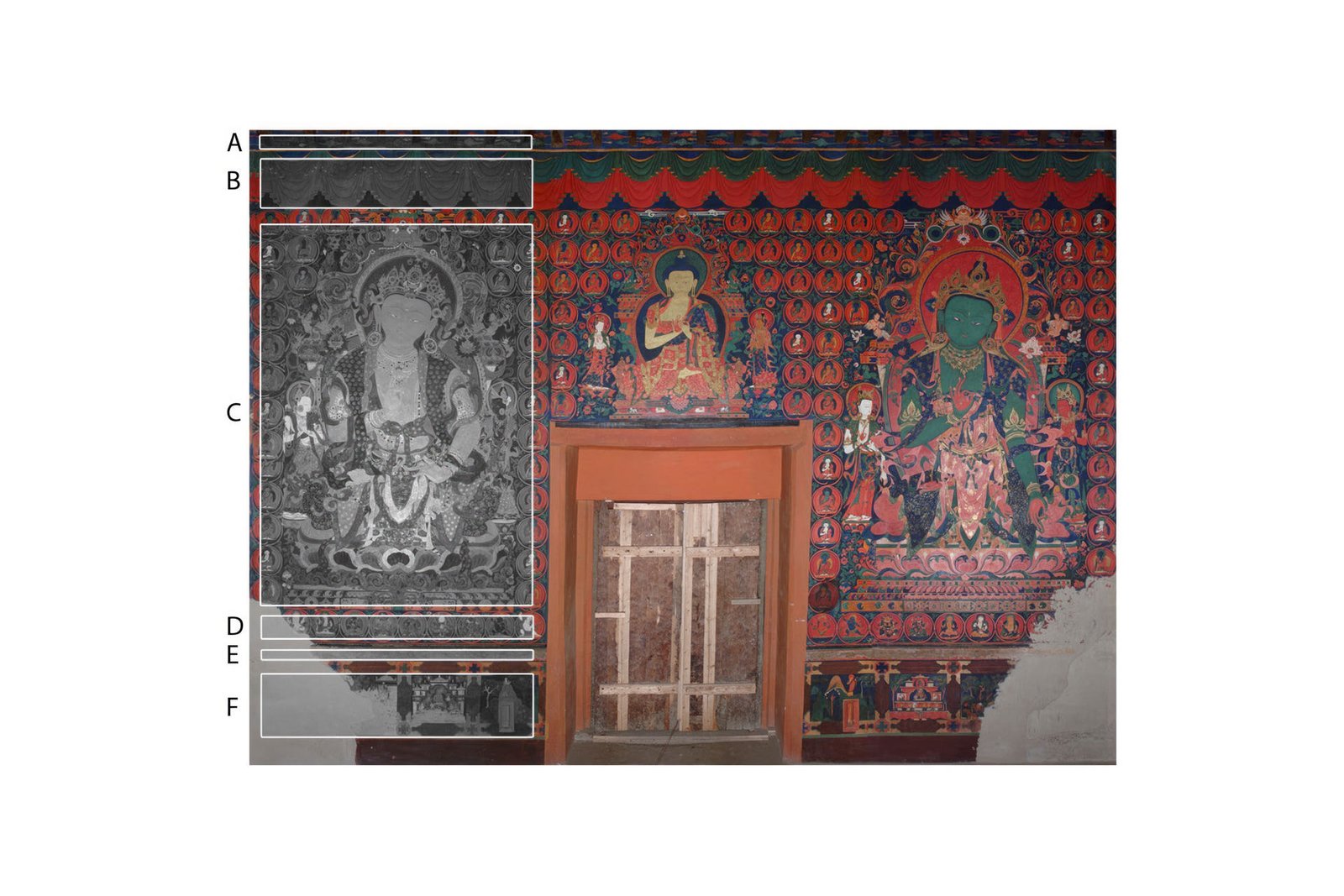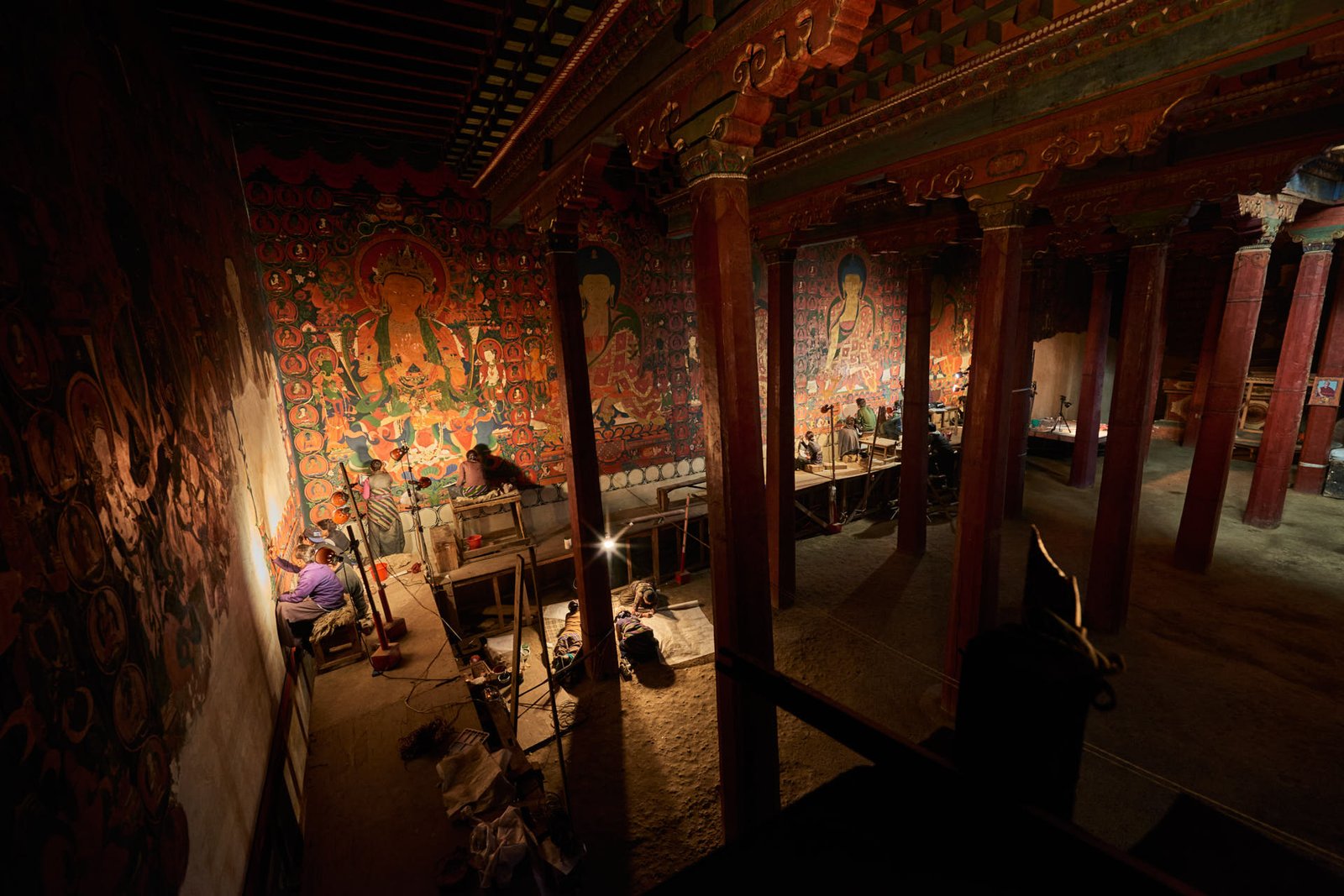understanding the murals

the space
the modules
A BRIEF DESCRIPTION

This module consists mainly in a representation of a blue sky background filled up randomly with clouds executed in a typical XV century Chinese style. At present there are traces left only on the eastern and southern walls.
This module consists simply of a long curtain meant to be running all along the four walls. At present there are traces left only on the eastern and southern walls.
This is the most important module within the pictorial cycle, the main object of worship for the local community together with the statues. The module contains a sequence of gigantic deities sitting on a throne with two attendants in a mirror-image position standing at his/her side. The 5 cosmic Buddhas depicted in a recurring sequence surround the deity and his/her attendants. Luckily the attributes that describe the Bodhisattvas and the positions of the hands of the Buddhas are all present, given very little to interpretation.
This module contains mostly groups of deities but unfortunately it is impossible to deduce the sequence of the missing ones. After a long photographic research on the Himalaya the remaining 17 deities of Thupchen were found in Gyantse Kumbum in Tibet. H.H. Sakya Trichen, former head of the Shakya sect confirmed the discovery and he then chose the missing deities from the same sequence of deities found in Tibet.
This module contains a religious writing in Sanskrit, known in Tibetan as "lendza". The original writing was chopped off in the past centuries for unknown reasons and only few traces are left on the western wall. If H.H. Sakya Trizin will find it appropriate to replace the Sanskrit writing, then he will decide what should be written.
This module contains a sequence of stories. Some of the key stories still existing in Tubchen were found in a famous temple in Tibet, known as Zhalu. H.H. Sakya Trichen identified the remaining stories in the pictorial cycle of Rangjung Dorje's "The Tantra of Previous Lives" and he decided that those stories be painted in Tubchen.
